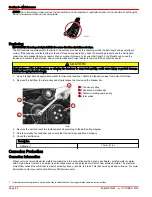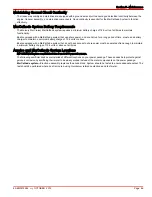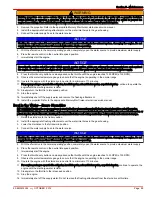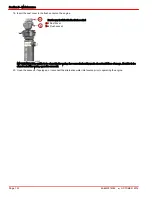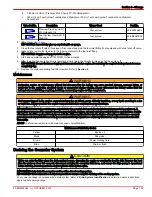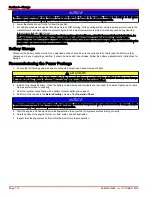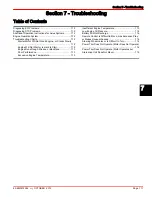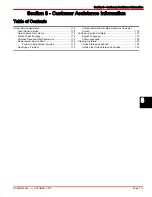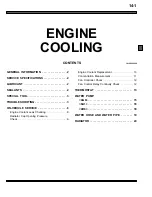
Section 6 - Storage
Page 102
90-8M0074352
eng
OCTOBER 2012
Cold Weather or Extended Storage
IMPORTANT: Mercury MerCruiser strongly recommends that this service should be performed by an authorized Mercury
MerCruiser dealer. Damage caused by freezing temperatures is not covered by the Mercury MerCruiser Limited Warranty.
NOTICE
Water trapped in the seawater section of the cooling system can cause corrosion or freeze damage. Drain the seawater
section of the cooling system immediately after operation or before any length of storage in freezing temperatures. If the boat
is in the water, keep the seacock closed until restarting the engine to prevent water from flowing back into the cooling system.
If the boat is not fitted with a seacock, leave the water inlet hose disconnected and plugged.
NOTE: As a precautionary measure, attach a tag to the key switch or steering wheel of the boat reminding the operator to open
the seacock or unplug and reconnect the water inlet hose before starting the engine.
IMPORTANT: Mercury MerCruiser requires that propylene glycol antifreeze, mixed to the manufacturer's instructions, be used
in the seawater section of the cooling system for freezing temperatures or extended storage. Ensure that the propylene glycol
antifreeze contains a rust inhibitor and is recommended for use in marine engines. Be certain to follow the propylene glycol
manufacturer's recommendations.
Preparing Power Package for Storage
1. Fill the fuel tanks with fresh gasoline (that does not contain alcohol) and a sufficient amount of Quicksilver Gasoline
Stabilizer for Marine Engines to treat the gasoline. Follow instructions on the container.
2. Check the antifreeze concentration. Refer to the
Specifications
section.
3. If the boat is to be placed in storage with fuel containing alcohol in fuel tanks (if fuel without alcohol is not available): Fuel
tanks should be drained as low as possible and Mercury/Quicksilver Gasoline Stabilizer for Marine Engines added to any
fuel remaining in the tank. Refer to
Fuel Requirements
for additional information.
4. Flush the cooling system. Refer to the
Maintenance
section.
5. Supply cooling water to engine. Refer to the
Maintenance
section.
6. Operate the engine sufficiently to bring it up to normal operating temperature and allow fuel with Mercury/Quicksilver
Gasoline Stabilizer to circulate through the fuel system. Shut off the engine.
7. Change the oil and oil filter.
8. Prepare the engine and fuel system for storage. See
Engine and Fuel System Preparation
.
9. Drain the engine seawater cooling system. See
Draining the Seawater System
.
NOTICE
Water trapped in the seawater section of the cooling system can cause corrosion or freeze damage. Drain the seawater
section of the cooling system immediately after operation or before any length of storage in freezing temperatures. If the boat
is in the water, keep the seacock closed until restarting the engine to prevent water from flowing back into the cooling system.
If the boat is not fitted with a seacock, leave the water inlet hose disconnected and plugged.
10. For additional assurance against freezing and rust, after draining, fill the seawater cooling system with propylene glycol
mixed to the manufacturer's recommendation to protect engine to the lowest temperature to which it will be exposed during
freezing temperatures or extended storage.
11. Store the battery according to the manufacturer's instructions.
Engine and Fuel System Preparation
!
WARNING
Fuel is flammable and explosive. Ensure that the key switch is off and the lanyard is positioned so that the engine cannot
start. Do not smoke or allow sources of spark or open flame in the area while servicing. Keep the work area well ventilated
and avoid prolonged exposure to vapors. Always check for leaks before attempting to start the engine, and wipe up any
spilled fuel immediately.
!
WARNING
Fuel vapors trapped in the engine compartment may be an irritant, cause difficulty breathing, or may ignite resulting in a fire
or explosion. Always ventilate the engine compartment before servicing the power package.
1. In a 23 liter (6 US gal.) remote fuel tank mix:
a. 19 liter (5 US gal.) regular unleaded 87 octane (90 RON) gasoline

